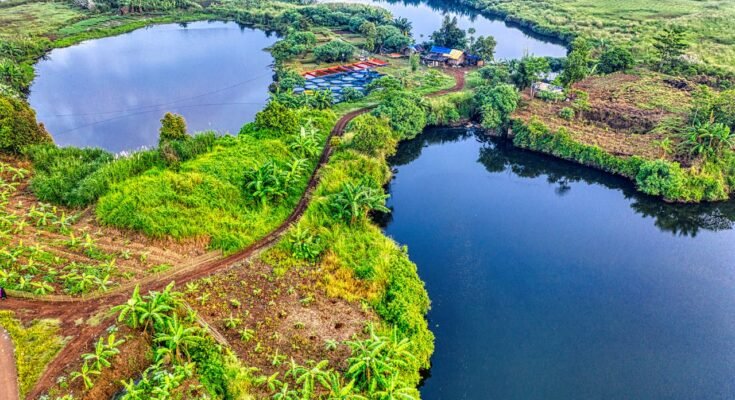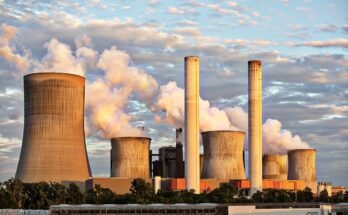Earth is covered with vast ecosystems, landscapes, and a immense variety of organisms which all interact among themselves within an equally vast web of environmental interactions. Among the three chief elements shaping these ecosystems are land, climate, and natural resources. The three elements basically provide the foundation for human societies and nature. It becomes crucial to know how these interact and ways of human influence on them in interfacing some of the widely faced environmental crises today.
1. The Role of Land in Ecosystems
Land may be defined as a solid surface of the Earth, which in general comprises continents, islands, and the ocean floor. This land serves as the base for all terrestrial life and is a place of residence for plants, animals, and human beings. The configuration and nature of land greatly influence the distribution of various ecosystems. For example:
- Topography: the landforms, such as mountains, valleys, plains, and plateaus, have an effect on water flow, climate, and the type of vegetation that can thrive in some areas.
- Soil Composition: different kinds of soil provide nutrition to different plants. Fertile soils rich in nutrients enable agriculture, while sandy or rocky soils may possibly hinder the growth of vegetation and agriculture.
Land is also critical because it provides food, shelter, and resources crucial for human survival and economic advancement. On the other hand, misallocation of land in terms of deforestation, urbanization, and agricultural expansion leads to soil degradation, loss of biodiversity, and reduction of land liquidity to sustain life.
2. The Role of Climate in The Life and Resources
Climate is the long-term pattern of temperature, humidity, precipitation, and other atmospheric states for any location. Climate has a different meaning from weather; the latter refers to the day-to-day disturbances. Climate gives the averages of weather changes, normally over decades or perhaps centuries. Climate is key in determining what types of ecosystems will flourish in a given geographical location.
- Tropical Climate:A pleasant event occurs with warm temperatures and consistent rainfall, which together forms lush rainforests and allow for a vast number of species to thrive. The Amazon Rainforest includes great examples of global carbon sinks.
- Desert Climate:They are classified under arid climates with low water availability, high temperatures, and desert ecosystems that support drought-resistant plants and animals.
- Polar Climate: Long winters and short summers, cold climates, are characterized by ice sheets and tundra ecosystems. Yet, they are very sensitive to changes in climate and very fragile.
Increased frequency of climate change phenomena in recent years due to human activities, especially climate change driven by the burning of fossil fuels, land-use changes like deforestation, etc. These mechanisms determine global warming, which includes the increasing temperature on Earth, melting of ice caps, increase in severity weather events, such as hurricanes and droughts, and destruction of ecosystems.
3. Natural Resources: The Treasures of the Earth.
Natural resources are the raw materials which man must use for energy, construction, agriculture, manufacturing, and so forth. They can be categorized broadly into two types:
- Renewable Resources: Such natural resources are replenished within a reasonable time. Their abundance is extremely sustainable, renewable, yet a little can prune them to extinction if exploited or mismanaged. For example, marine fish, although renewable resources, may very well become non-renewable due to overly intensive fishing.
- Non-renewable Resources: These resources are finite in their stocks and cannot be replenished within the span of a human lifetime. Such resources include fossil fuels, minerals, and metals. Their extraction and utilization have contributed to the destruction of habitats and pollution that also contributes to the greenhouse effect.
Among the natural resources are ecosystem services such as clean air, water, fertile soils, and biodiversity, which are indispensable to human health and survival. Over-exploitation, degradation and pollution of such resources could lead to far-reaching impacts such as crippling food insecurity, decreased access to clean water, and collapse of ecosystems.
4. The Relationship between Land, Climate and Natural Resources
The relationships between land, climate, and natural resources are deeply intertwined; for instance,
- Land and climate: Climate will enhance or impede the development of landforms and the types of vegetation that can be maintained in any territory. Land use will, in turn, affect the local climate.
- Climate and Natural Resources: Climate change can bring about changes in the availability of natural resources. For example, climate change-induced droughts can reduce the availability of freshwater resources, and higher temperatures may affect the growth of crops, leading to food shortages.
- Climate and natural resources: Climate change can affect the availability of the natural resources. Changes in climate are altering the availability of natural resources. For example, droughts caused by climate change are going to decrease the availability of freshwater resources; the warming of temperatures is going to affect growing crops, causing food shortages.
- Land and natural resources: Land use affects the availability and sustainability of natural resources. Practices such as deforestation can reduce biodiversity and disrupt the water cycle; while sustainable land management practices can improve soil fertility and water retention.
5.Societal and Environmental Problems and Solutions
Within contemporary society, an ill-timed insistence on climate sustainability is seriously jeopardized by human activities. Some of the prominent challenges include:
- Deforestation and habitat loss: Unsustainable loggings prompt disappearing forests for farming, lumber, and city development that lead to habitat loss, surge of carbon outputs, and vanish of biodiversity.
- Climate Changes: The human-induced alterations to the global climate got in recent years paralleled rapid frequencies, amplification of the sea-level rise, and disruption of ecosystems.
- Depletion of Resources: Mining and extraction of minerals and hydrocarbons are not the sustainable way of development and eventually results in resource destruction.
- These are all solvable problems: sustainable reforestation, renewable energy, ecologically sound systems of conservation, and resource efficiency facilitate securing the vital relationships between land, climate, and natural resources for future generations.
Conclusion
Land, climate, and natural resources comprise the basis of life on Earth. Their interrelationship creates the ever-improving ecosystems upon which the health of all living organisms, including mankind, is anchored. Guardianship and sustainable use are vital for the upkeep of the health of our planet and the necessary future for the whole of mankind. Realization of how land, climate, and natural resources (familiar with their interrelationships) could inspire better decision-making: safeguard our environment and build a world that could sustain future generations.



